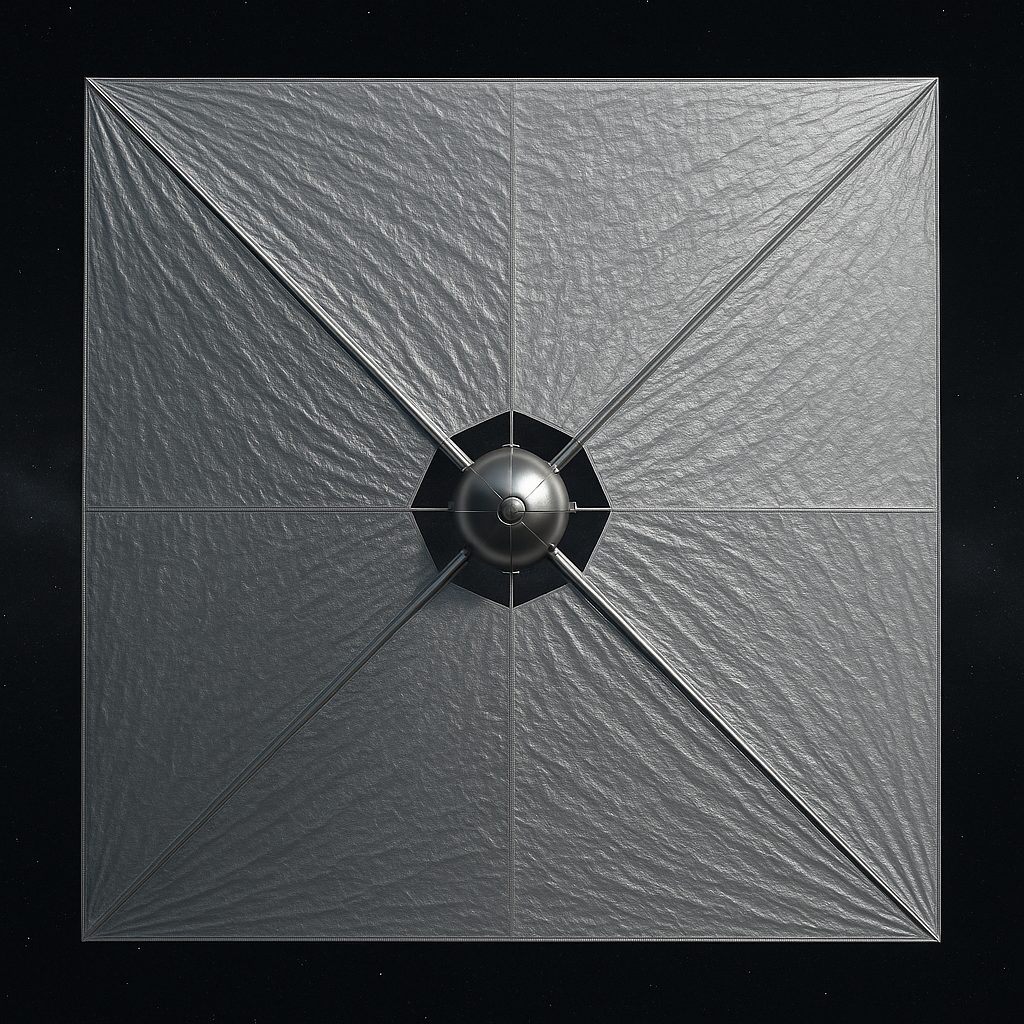



Three revolutionary components working in perfect synchronization to achieve unprecedented 0.50c interstellar velocity in just 40 minutes.
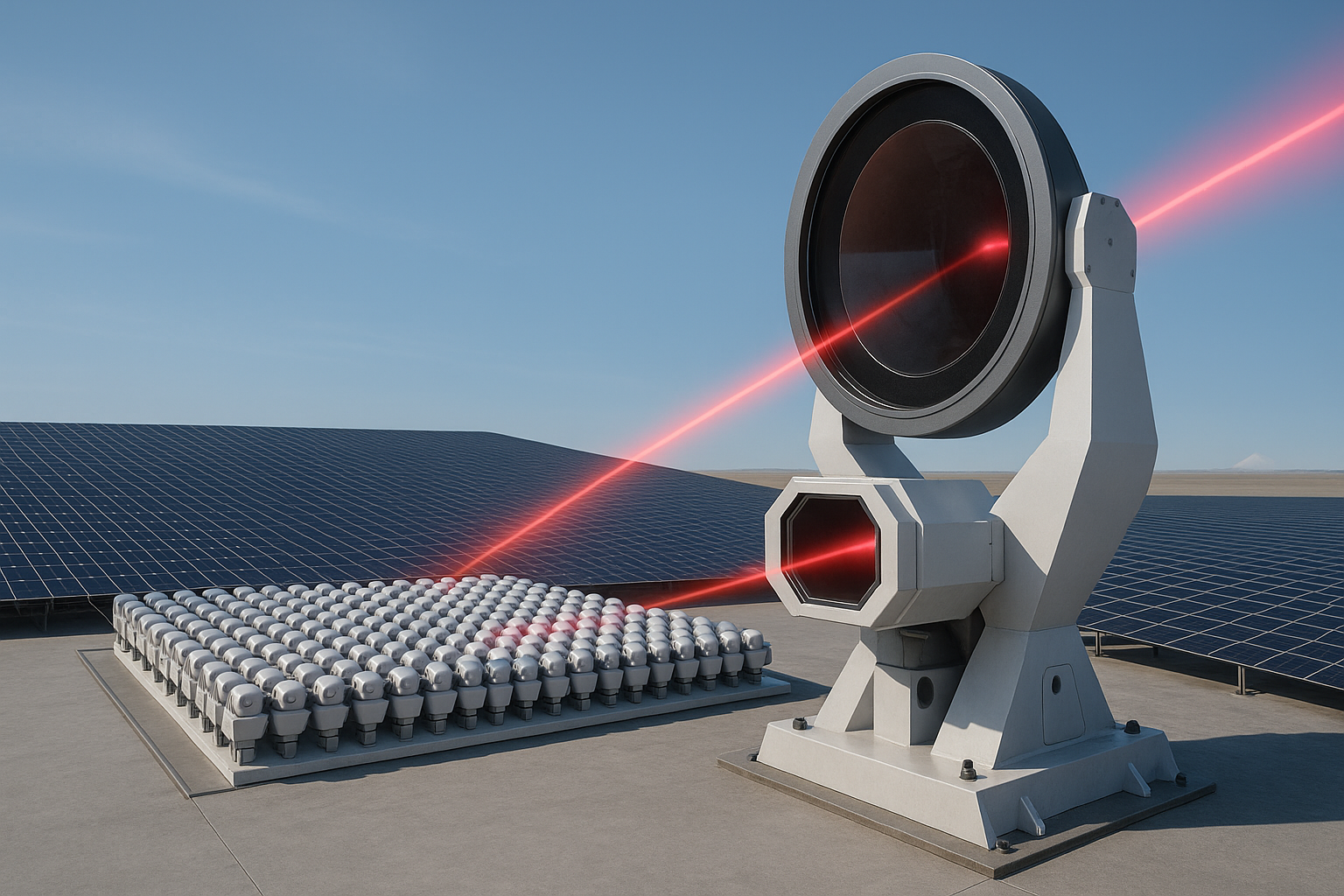
10,000 phased Nd:YAG lasers on the lunar surface deliver 500 GW of coherent power, creating the most powerful directed energy system ever built.
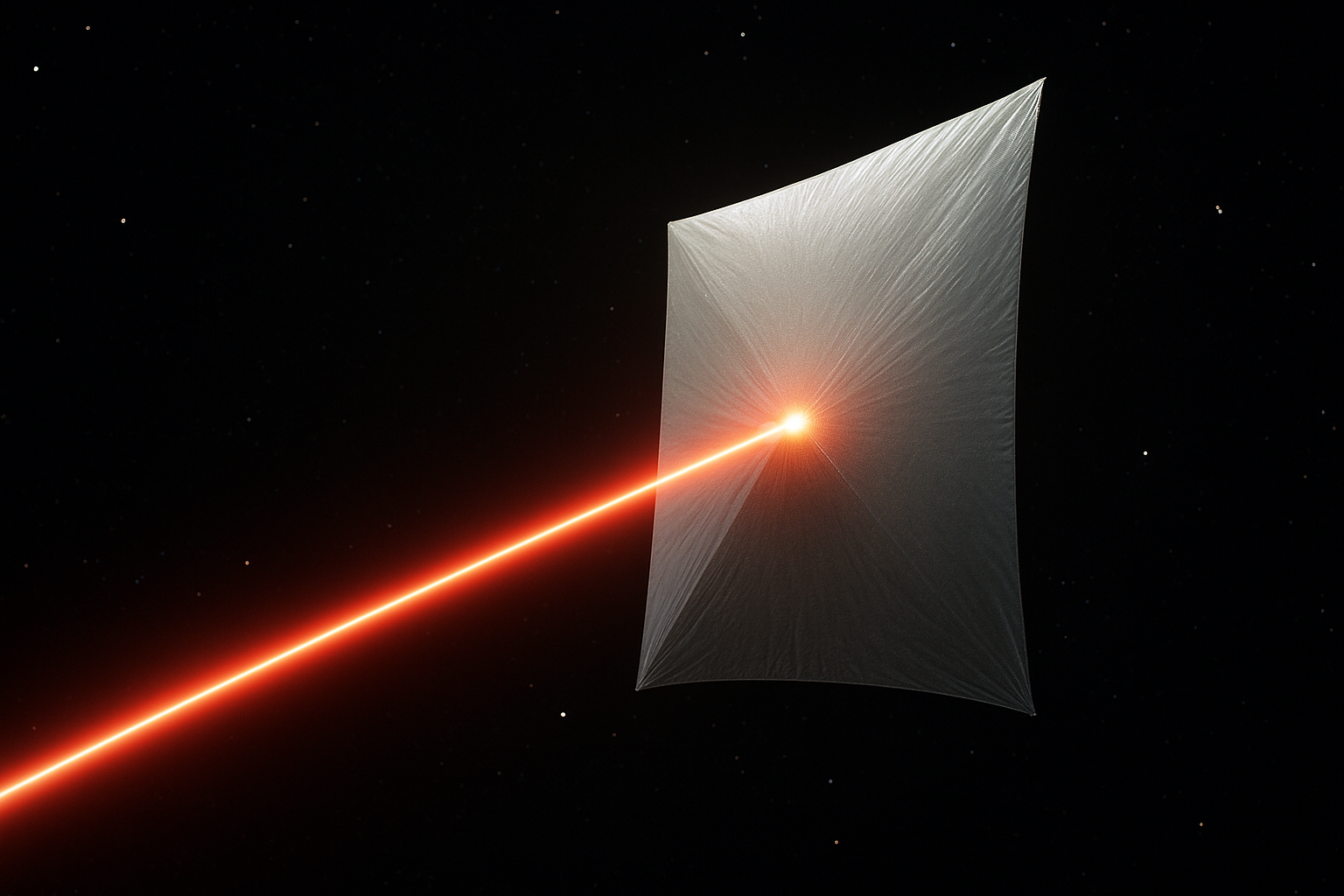
Laser beam transfers momentum to ultra-reflective sail through radiation pressure, accelerating from 0 to 0.50c in 40 minutes across 8 deployment stages.
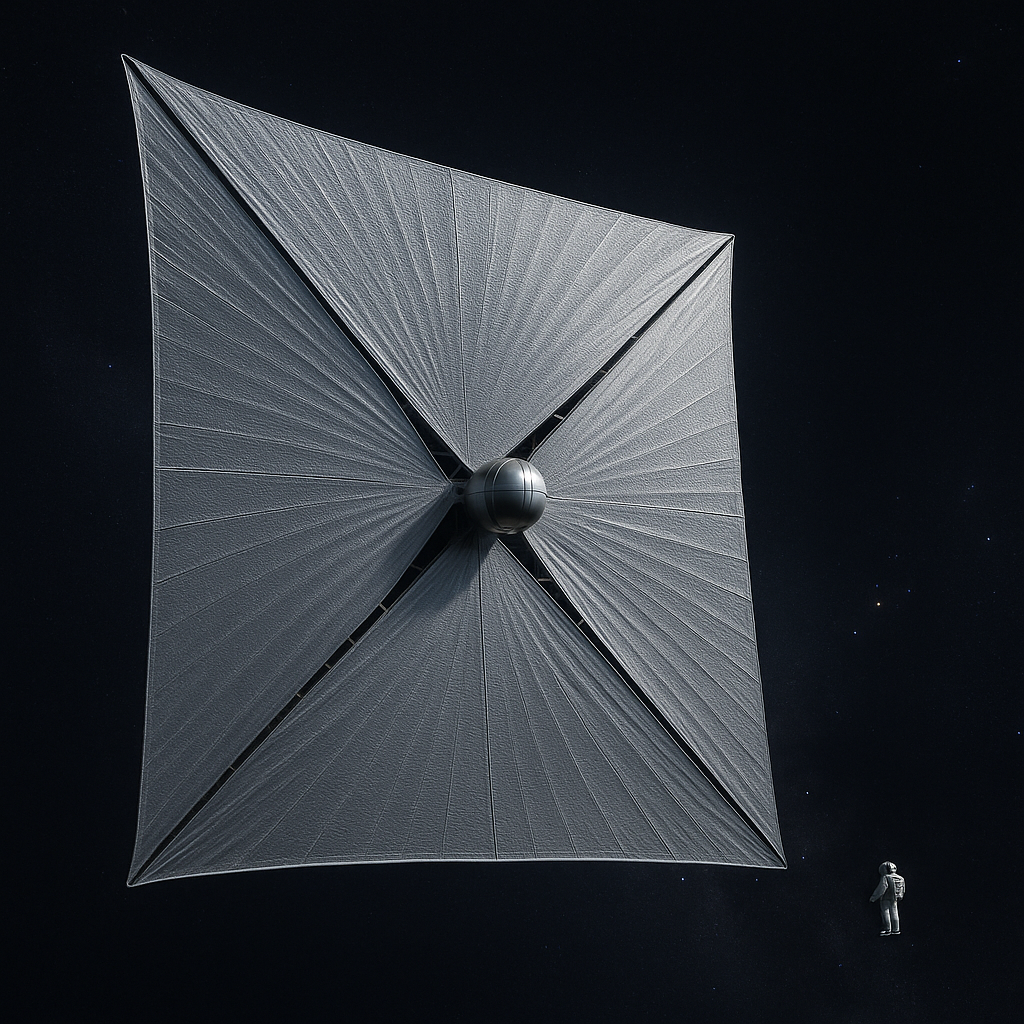
Progressive mass reduction through 8 stages (9.23g → 1.2g), each optimized by IBM Torino quantum computer for maximum velocity gain.

Our quantum-optimized design achieves unprecedented 0.50c velocity through progressive mass reduction across 8 deployment stages.
The world's most powerful directed energy system, featuring 10,000 phased lasers on the lunar surface delivering 40 minutes of continuous acceleration power.

520 GW from 260 Concentrated Solar Power (CSP) towers with molten salt storage
6.5 million heliostats • 1,300 km² solar farm • 16 hours energy storage
Powered by IBM Torino quantum computer (133 qubits), our design achieves 4.5× faster velocity than classical optimization methods.
IBM Torino (133 qubits, 4,000 shots) discovered 283 feasible configurations using Variational Quantum Eigensolver (VQE) algorithm, selecting optimal 8-stage design.
Silicon Carbide + HfO₂/SiO₂ metamaterial stack with 99.95% reflectivity @ 1064nm, engineered for 2,973K thermal limits during acceleration.
Phased array of 10,000 Nd:YAG lasers (50 MW each) on the lunar surface delivering 40-minute acceleration burst with no atmospheric interference.
Progressive mass reduction through 8 deployment stages, each optimized for maximum velocity gain with minimal structural mass penalty.
Ultra-miniaturized scientific package: camera, laser comm (1W), RTG power, computer, and sensors for α Centauri flyby imaging.
Complete engineering specifications, validated manufacturing processes, established supply chain. Ready for Phase 1 development in 2026.
Ultra-thin metamaterial stack designed for extreme conditions: 500 GW laser power, 2,973K thermal limits, 99.95% reflectivity.
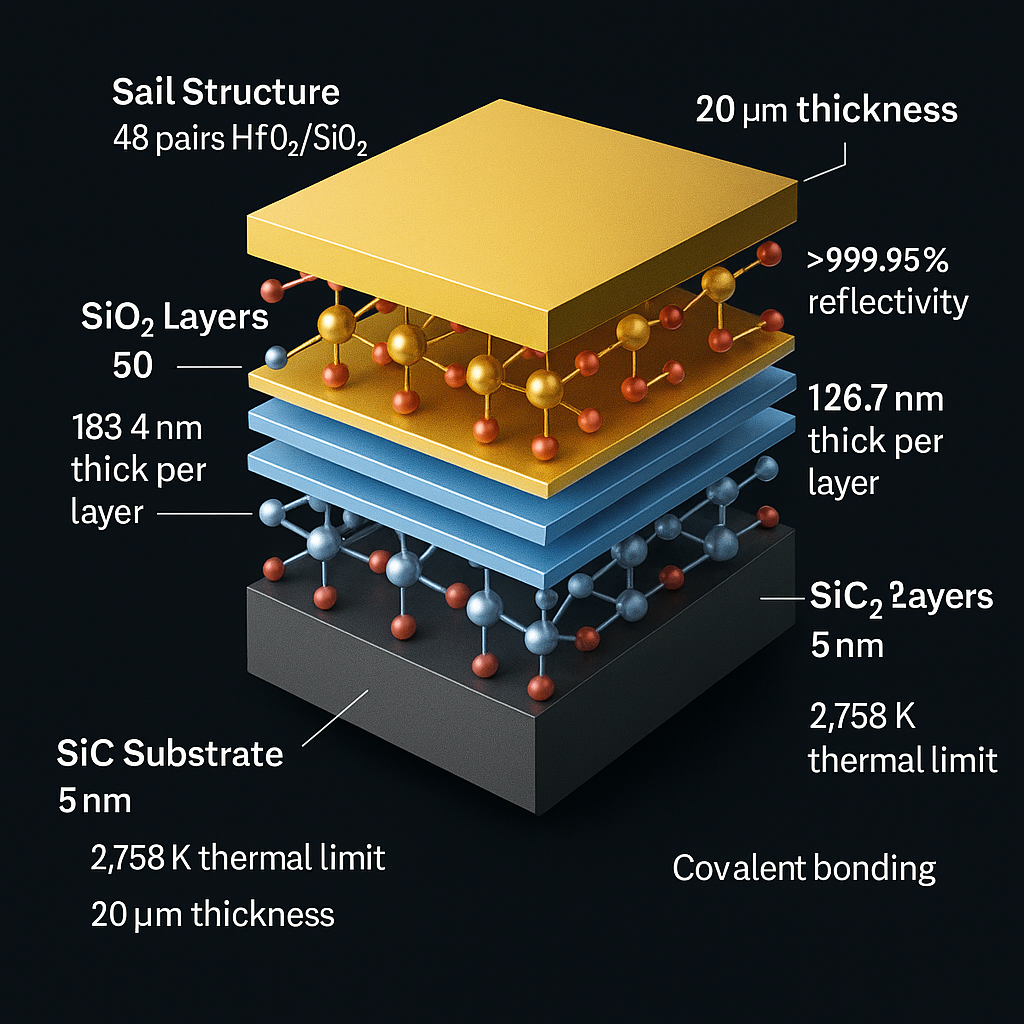
Launch from low Earth orbit, accelerate past the Moon in minutes, reach 0.50c at 100,000 km altitude, and cruise to α Centauri — all powered by laser light from Earth.
In 8 years, Warpeed will capture the first detailed images of α Centauri A, B, and Proxima Centauri — along with potential exoplanets — revolutionizing our understanding of the nearest stellar system.
Warpeed delivers 2.5× faster missions at half the cost, powered by quantum optimization breakthrough and production-ready engineering.
| Metric | WARPEED | other interstellar initiatives | Voyager 1 |
|---|---|---|---|
| Velocity | 0.50c (149,896 km/s) | 0.20c (59,958 km/s) | 0.000057c (17 km/s) |
| Time to α Centauri | 8 years | 21.8 years | 76,600 years |
| Optimization | IBM Torino Quantum (133 qubits) | Classical | N/A |
| System Design | 8-stage cascade | Single-stage | Chemical rocket |
| Laser Power | 500 GW (10,000 units) | 100 GW (conceptual) | N/A |
| Total Program Cost | $13B | $500B (estimated) | $1B |
| Status | Production-ready specs | Conceptual | Active mission |
| First Launch | 2040 | 2060+ (estimated) | 1977 (launched) |
Results in a single decade (2045-2057) vs multiple generations (2060-2090+)
From company formation to first data received on Earth: a comprehensive 22-year program delivering humanity's first interstellar mission.
Incorporate Warpeed Technologies Inc. • Seed funding ($50M) • Assemble founding team (20 people) • Begin technology validation
Build first 1 m² prototype sail • 1 MW laser test at JPL • Publish in Nature • Series A funding ($8M) • NASA/ESA partnerships • 10 MW test mission
100 GW laser array (2,000 units) • 104 GW solar farm • First complete 8-stage system • Test missions: 0.30c, 0.40c • Lunar base construction
500 GW laser array operational (10,000 units) • 520 GW power generation • Manufacturing: 100 systems/year • First 0.50c test mission • System certification
Lightsail launches to 100,000 km • 40-minute laser acceleration (8 stages) • Achieves 0.50c final velocity • Trajectory to α Centauri confirmed • Cruise phase begins
Flyby at 0.50c (18 millisecond observation window) • 1,000 high-resolution images captured • Targets: α Cen A, B, Proxima Centauri, exoplanets • Laser communication to Earth initiated
After 4.37 year light-time delay • First close-up images of another star system • Scientific data: planetary atmospheres, stellar characteristics • MISSION SUCCESS!
$13B total program over 20 years with diversified funding from government (60%), private sector (30%), and commercial revenues (10%).
NASA, ESA, JAXA, CNSA
Multi-national consortium
private investment partnerships
VCs, tech billionaires
Payload slots, IP licensing
Data sales, spinoffs
Be part of humanity's first interstellar mission. We're seeking partners, investors, engineers, scientists, and visionaries to make this historic achievement a reality.
DBA: Warpeed
Delaware C-Corporation (Formation: Q1 2026)
Email: info@warpeed.space
Investment: invest@warpeed.space
Press: press@warpeed.space